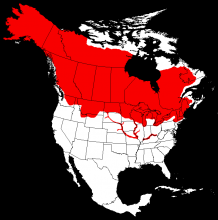
The burbot is an engima, a mystery, a fish unlike any other. It is the only freshwater member of the great codfish family. The cod is the most important food fish that has ever existed on earth. Like the saltwater cod it descended from, the burbot is a northern fish - a fish of the stormy, ice-wracked waters that have wrecked ships and killed men since the first Norsemen braved the northern waters to catch them. The burbot prefers deep, cold water, darkness, and secret hiding places. The life of the burbot is timed to strange cycles: the wind, the winter, the eternal darkness, and the midnight sun. The burbot is a devourer. It is a true ambush predator, prone to attack and swallow anything it encounters whether living or dead.
|
Other names: The burbot is also known as eelpout, lawyer, lush, loche, methy, ling, lingcod, and mud shark. Its Ojibwe name is Mizay. "Mizayikaa" means "there are many burbot." Chanting this phrase repeatedly is a great way to pass the time while waiting for the burbot to appear. It really rolls off the tongue: "Mizayikaa ... mizayikaa ... mizayikaa ... mizayikaa ..." I think it actually attracts burbot to your hook ... but your results may vary. |

 Powered
Powered



 In the southern part of their range (including all of the lower 48 US states), burbot most often live in deep, cold lakes. Few rivers south of the arctic region are clean and cold enough for burbot year-round. In the far northern reaches of Canada, Alaska, and Siberia, burbot can be found in most rivers and lakes. European and Russian Burbot also exist, although this wonderful fish has sadly become extinct in many parts of Europe.
In the southern part of their range (including all of the lower 48 US states), burbot most often live in deep, cold lakes. Few rivers south of the arctic region are clean and cold enough for burbot year-round. In the far northern reaches of Canada, Alaska, and Siberia, burbot can be found in most rivers and lakes. European and Russian Burbot also exist, although this wonderful fish has sadly become extinct in many parts of Europe. 





















